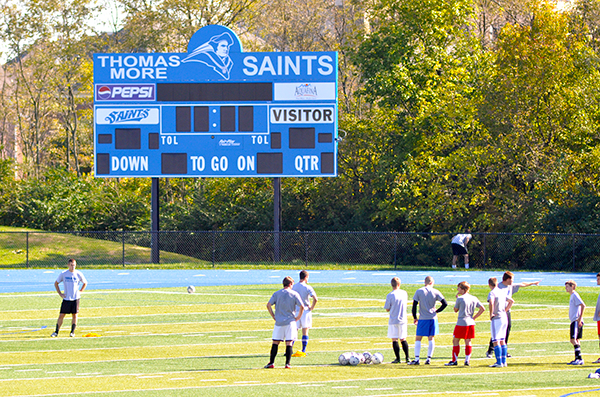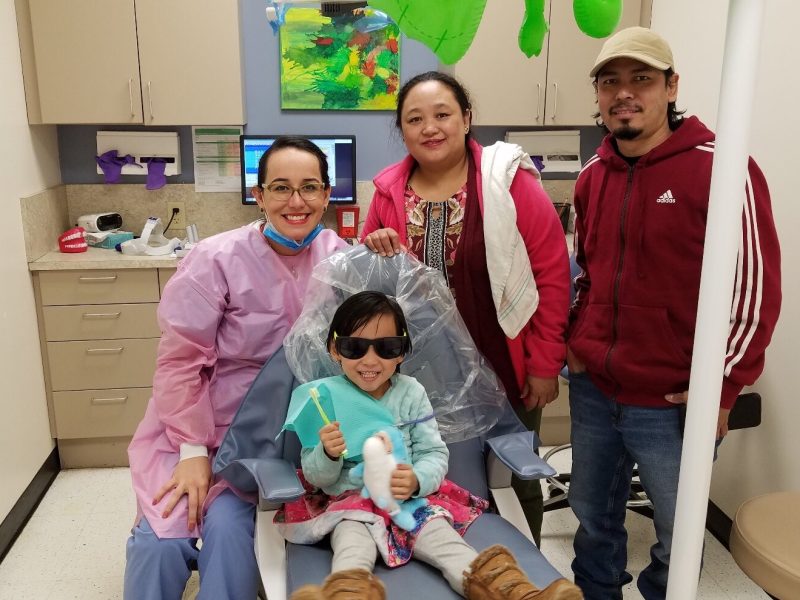An alternate path to a four-year degree
New and broader credit transfer agreements between two- and four-year colleges put bachelor’s degrees within reach for a growing number of Greater Cincinnati students.
Students who previously faced financial and academic barriers to four-year degrees now have more opportunities than ever. New matriculation agreements between two-year colleges and four-year universities not only reduce the cost of a bachelor’s degree, they also pave the way toward success for students who graduate from high school but find themselves unprepared for university-level coursework.
Matriculation agreements coordinate community college and university curriculums in order to provide smooth, easy transition for students. Community college tuition is typically about half the cost of a four-year university, so completing general education requirements inside an associate degree before moving on to a bachelor’s saves a considerable about of money.
The two-step college experience also tends to promote long-term success. Students who started at a two-year institution and then transferred to a four-year school completed their degrees at a rate 73.5 percent, compared to 63.2 percent for those who started at four-year institutions, according to a study done by the National Student Clearinghouse Research Center.
“Students on this kind of path are more focused, not taking extraneous courses and wasting their time or money,” says Mike Rosenberg, director of transfer at Gateway Community and Technical College in Florence. “Students also save about 40 percent of the total cost of a bachelor’s degree at a public institution.”
Kentucky colleges provide pathways to success
In early October 2012, Gateway and Northern Kentucky University established a matriculation agreement called Gateway2NKU. The program creates a series of academic pathways for a range of majors from business to psychology, nursing, education and criminal justice.
“Theoretically you can go into just about anything, though,” Rosenberg says. Once a student enrolls in a pathway, they’re immediately paired with an advisor who guides them from start to finish along a roadmap pre-aligned to a four-year degree at NKU. Or if a specific pathway doesn’t already exist, the advisor can help create one.
Students participating in Gateway2NKU are dually enrolled in both institutions. While at Gateway, the students are also issued an NKU identification card and can participate in all student activities at both campuses. For example, while taking courses at Gateway, students can rush with NKU’s Greek fraternities and sororities, use the recreation center and library, live on NKU’s campus and even take up to 12 credit hours of NKU classes at Gateway tuition rates.
“It’s really an attractive program for students who know that they’re going to try to pursue a four-year degree,” says Margaret Thomson, Gateway’s director of public relations. It also benefits NKU by allowing students who might not have been eligible for acceptance on first try to attend Gateway and get their feet wet before matriculating to NKU as juniors instead of freshmen.
Gateway also has an agreement with Thomas More College in nearby Crestview Hills that guarantees enrollment for students with a Gateway associate degree, as well as a scholarship worth $10,000-$14,000 a year, depending on academic achievement.
“It’s a very positive opportunity,” Rosenberg says. “One of the things that helps students on their path is having a plan. It takes a lot of pressure off, and having an attainable goal makes them less nervous. Navigating campus winds up being a bigger challenge than being able to do junior- and senior-level college work. The students are ready for that.”
Ohio offers cooperative college agreements
University preparedness has also been the name of the game for new matriculation agreements in Ohio. When the Ohio legislature mandated the move from quarters to semesters for all public institutions in 2012, Cincinnati State Technical and Community College and the University of Cincinnati set to work expanding their transferability agreement. Matriculation agreements between the two schools are nothing new, but this time around they wanted to establish something that was more comprehensive and that would address UC’s rising admission standards.
“It used to be that anybody who applied [to UC] pretty much got admission,” says Robert White, Cincinnati State’s media relations coordinator. “But UC has recently gotten to be quite selective.” UC’s ACT score requirements have gone up as its enrollment numbers grow. In general, four-year schools are now less inclined to spend time or resources on remediation for students who are not ready for the coursework.
In October, shortly after the Gateway2NKU agreement, UC and Cincinnati State signed their own matriculation agreement establishing a well-defined institutional connection with more than 100 courses and guaranteeing UC admission for any Cincinnati State graduate with at least a 2.0 GPA.
Smaller classes and more support pave the way
Like Gateway, Cincinnati State is an open access institution. This means that students who aspire to a four-year degree at a school like UC or NKU but who don’t meet acceptance criteria, can enroll at Cincinnati State and work their way toward one of those programs. In fact, general education credits earned at Cincinnati State are guaranteed to transfer to any institution in Ohio, which also means that they’re likely to transfer equally well anywhere across the country. But for a student who may struggle with university-level math, science or English courses, enrolling at Cincinnati State doesn’t mean easier but still transferable coursework.
When remediation is necessary, Cincinnati State offers academic foundations classes that prepare students for the standardized general education courses, which do meet Ohio accreditation requirements. Community colleges like Cincinnati State and Gateway have smaller class sizes than those that might be found at larger four-year institutions, and are able to provide greater support and assistance to bring students up to a level where they can successfully complete transferable general education courses.
“Two-year schools are increasingly functioning as a place you go to make sure you’re academically ready for a four-year school,” White says.
In addition to guaranteed UC acceptance, the matriculation agreement establishes the Cincinnati Pathways Scholars program. Cincinnati State students who complete at least 15 semester credit hours with a minimum 3.25 GPA are eligible, and perks of the program begin with a UC “affiliate” identification card, admission to UC sporting events and membership to its recreation center.
Students in the Pathways Scholars program are matched with both Cincinnati State and UC academic advisors, who help set them on an efficient path toward a bachelor’s degree. Participants graduating from Cincinnati State with a 3.4 GPA or higher are eligible for a $2,100 scholarship, renewable for an additional two semesters provided the student maintains a UC GPA of 3.20 and earns at least 24 credit hours toward a degree.
“We’re facilitating the transfer rather than making students work through it on their own,” says Monica Posey, academic vice president at Cincinnati State. “That’s what’s going to make it easier and give the efficiency to maximize transferability for students.”
Schools view partnerships as investments and incentives
The tuition incentives, student benefits and added administrative responsibilities may appear awfully generous on the part of the institutions but for them it’s an investment. In this case, rather than putting resources into new buildings and athletics to attract students, they’re investing in the students themselves.
“Everybody’s looking for numbers,” Rosenberg says. “Both two- and four-year institutions are working to get students in the door.”
The matriculation agreements give more people an incentive to begin their degrees at community colleges, knowing that they can take those credits anywhere when they’re ready to work on a bachelor’s degree. For the four-year institutions, providing on-campus and tuition benefits makes it a lot more likely that students will continue directly onto their campuses and matriculate with a higher rate of success. Not only does this help graduation rates, but it also taps universities into a pool of students their high school recruiters would have missed: older, non-traditional learners and students who weren’t prepared or eligible for college immediately after high school graduation.
The students themselves get the benefit of a lower tuition burden and a better chance at overall success.
“It’s good for the community when all the schools are working together, and it’s good for institutions that are making connections,” Rosenberg says. “When I talk to students, one of the things I stress to them is that if you’re a good student, it doesn’t matter where you go to school. You’re going to do well.”



















